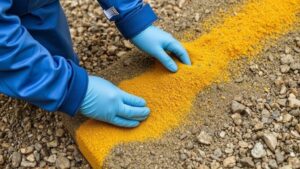Evaluating Historical Gold Mining Tailings for New Deposits
Evaluating Historical Gold Mining Tailings for New Deposits
In recent years, the evaluation of historical gold mining tailings has gained attention as a method for discovering new mineral deposits. This practice not only has the potential to significantly increase resource availability but also plays a crucial role in sustainable mining practices by minimizing environmental impacts. This article will explore the importance of tailings, methods for evaluation, and real-world applications supported by case studies.
The Importance of Tailings
Tailings refer to the materials left over after the extraction of valuable minerals from ore. In gold mining, these residuals often contain low-grade gold that was historically deemed uneconomical to extract. But, advancements in extraction technologies and changes in market conditions have made it possible to re-evaluate these materials as potential resource deposits.
According to the United Nations Environmental Programme, there are an estimated 1 billion tons of mine tailings at gold mines worldwide, making their evaluation a necessary step toward resource maximization. The extraction of residual gold from these tailings can contribute to a circular economy by reintroducing materials back into the market.
Methods for Evaluation
Evaluating historical gold mining tailings requires a multi-faceted approach, including geological assessments, sampling, and advanced analytical techniques. Here are some common methods used in the evaluation process:
- Geological Surveys: Conducting detailed geological surveys to understand the composition and structure of tailings deposits.
- Sampling Techniques: Utilizing systematic sampling methods to gather representative samples of tailings, ensuring accuracy in analysis.
- Analytical Techniques: Employing techniques such as fire assay or cyanide leaching to determine the gold content within sampled tailings.
Real-World Applications
Several mining companies have successfully implemented tailings evaluation to recover gold deposits. One notable case is the Re-Processing of Tailings Project at the Kibali Gold Mine in the Democratic Republic of Congo. This project focused on the rehabilitation of historic tailings sites using modern extraction technologies. results indicated a potential recovery of approximately 2 million ounces of gold, demonstrating the feasibility of re-evaluating tailings for economic gain.
Another example is the Tailing Management Program at the Homestake Gold Mine in South Dakota, USA, which found that gold recovery rates from tailings could be increased through advanced processing methods. Reports indicated recovery rates improved by up to 70%, providing substantial economic benefits.
Challenges and Considerations
Despite the potential benefits, evaluating historical gold mining tailings is not without challenges. Some of the critical considerations include:
- Environmental Impact: Ensuring that any reprocessing activities do not result in environmental degradation or contamination.
- Economic Viability: Assessing whether the potential recovery of gold is economically viable compared to the costs associated with reprocessing tailings.
- Regulatory Compliance: Adhering to local and international regulations governing mining operations and waste management.
Actionable Takeaways
For stakeholders in the mining industry, the evaluation of historical gold mining tailings presents a unique opportunity to unlock value from previously overlooked resources. To effectively initiate a project involving tailings:
- Conduct thorough geological and environmental assessments.
- Use systematic sampling and modern analytical techniques.
- Engage with regulatory bodies early in the process to ensure compliance.
- Evaluate economic feasibility by conducting a detailed cost-benefit analysis.
To wrap up, the evaluation of historical gold mining tailings represents a promising avenue for increasing mineral resource availability while promoting sustainable practices. By applying contemporary methods and technology to this previously underestimated resource, the mining industry can contribute to a more sustainable future.


